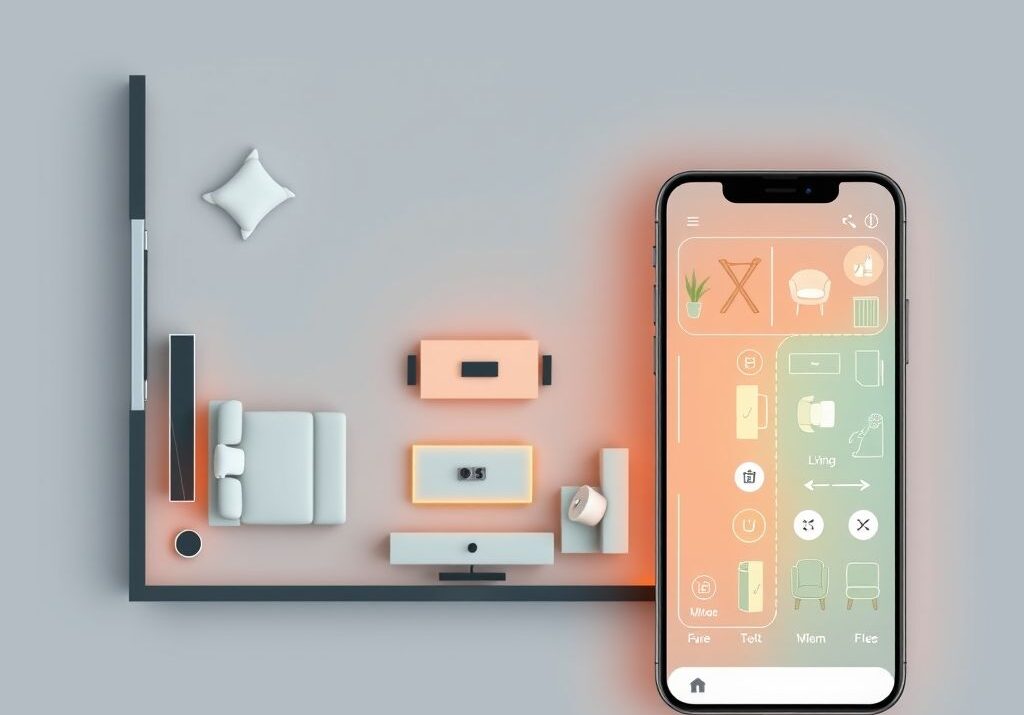Okay, picture this: You’re scrolling through interior design inspo online (we’ve all been there!), and you think, “Man, I wish I could try that in my own place without, you know, actually doing it.” Well, it sounds like someone at Studio555 had the same thought. I stumbled across an article from VentureBeat about how they just snagged $4.6 million to build a “playable app” for interior design. A playable app! Seriously cool.
Think of it like a Sims game, but instead of creating tiny humans, you’re crafting your dream living room. It’s more than just picking colors; it’s about building and decorating virtual spaces. This is a big deal because, let’s be honest, interior design can be intimidating and expensive.
And the market for this? Huge! According to Statista, the global interior design market is projected to reach $176.4 billion by 2027. People want to improve their spaces, but not everyone knows where to start or has the budget to hire a professional. A tool like this could really democratize design.
What I find particularly exciting is the accessibility factor. Imagine being able to experiment with different layouts, furniture styles, and color palettes, all from your phone or tablet. You could even get feedback from friends and family before committing to any real-world purchases. This tackles a major hurdle for many of us here in Cameroon, where access to professional interior designers might be limited or costly.
It also plays into a bigger trend: the increasing gamification of everyday tasks. We see it in fitness apps, language learning platforms, and now, apparently, interior design. It’s all about making things more engaging and less daunting. I think that’s a smart move.
5 Key Takeaways from Studio555’s Playable App:
- Design Democratization: This app has the potential to make interior design accessible to a wider audience, regardless of budget or location.
- Risk-Free Experimentation: Users can test out different design ideas without the commitment or cost of real-world changes.
- Gamified Engagement: The “playable app” concept leverages the power of games to make the design process more fun and engaging.
- Market Opportunity: The growing global interior design market presents a significant opportunity for innovative solutions like this.
- Mobile-First Approach: Focusing on a mobile app makes design accessible to users anytime, anywhere.
It will be really interesting to see how Studio555 executes this vision. If they can nail the user experience and offer a diverse range of design options, they could be on to something truly special. I’ll be keeping a close eye on this one!
FAQ About Playable Interior Design Apps:
- What is a “playable app” for interior design? It’s basically a game-like application that allows you to build and decorate virtual spaces.
- How is this different from existing interior design apps? Existing apps often focus on providing inspiration or connecting users with designers. This seems more hands-on, like a design simulator.
- Will the app be free to use? The article doesn’t specify, but many apps offer a free version with limited features and a paid subscription for more advanced options.
- Can I upload a photo of my own room to design it? That’s a great question! It’s not clear from the article, but many design apps offer this feature.
- What kind of furniture and decor options will be available? Hopefully, a wide variety of styles and brands to suit different tastes.
- Will I be able to purchase furniture directly through the app? It’s possible! Many apps are integrating e-commerce features to make the purchasing process easier.
- Will the app work on both Android and iOS devices? Most likely, yes. Developers typically aim for broad compatibility.
- Will it be available in Cameroon? You would have to check the app store and see if it is available in your country.
- How accurate is it when creating a room? The article doesn’t say, but the goal is to make it as accurate as possible.
- What will be the minimum device requirements? This depends on how resource intensive the app is, keep an eye on what the requirements are once the app is released.







